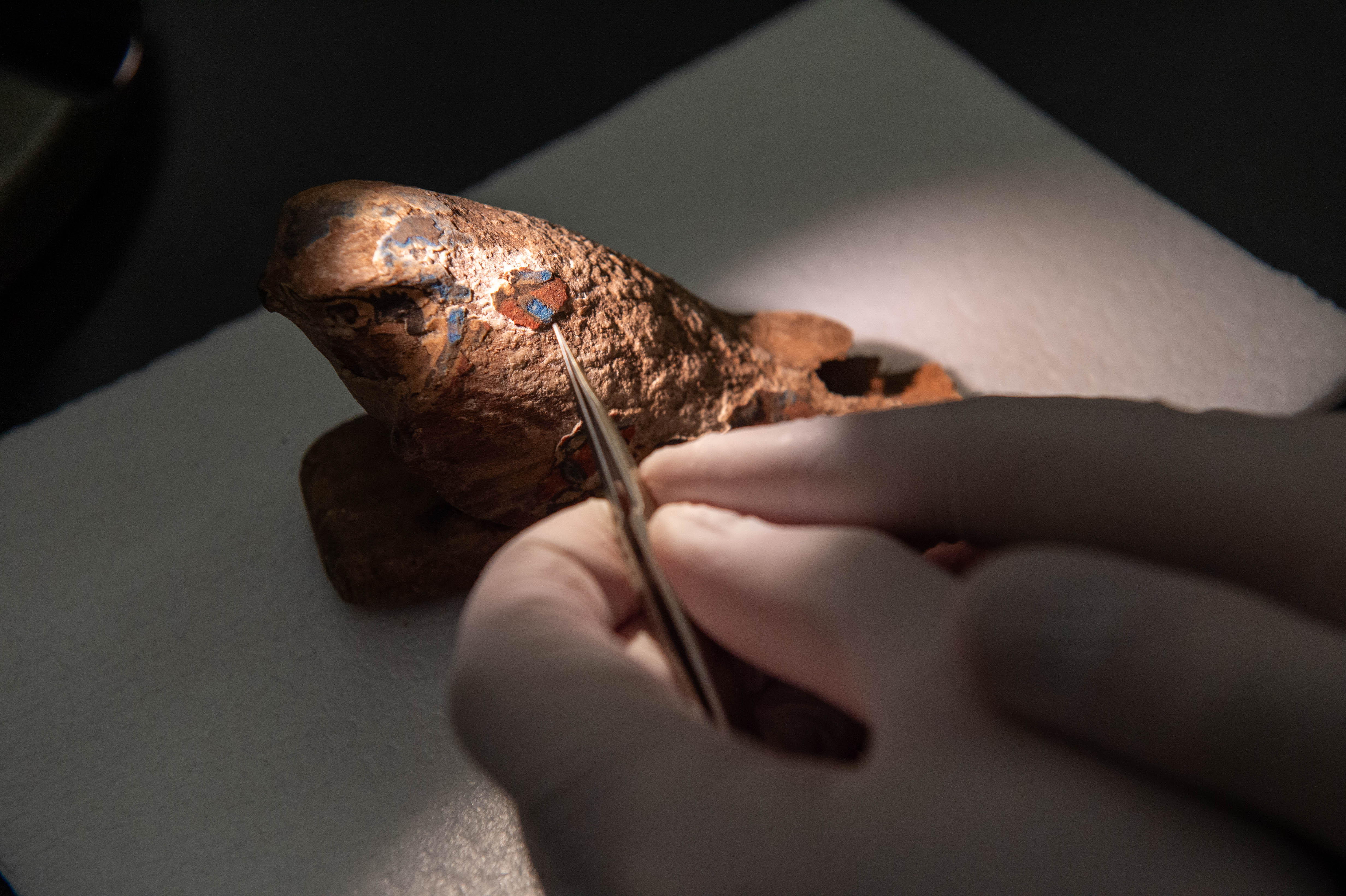Sometimes, when you see dusty artifacts in a museum or crumbling ruins in the streets, it’s easy to forget that these things were once new. Ancient Greek statues were complete and gaudily-painted; Pompeii was a bustling (and other activities) metropolis. In Egypt, the Pyramid at Giza shone and sparkled in the Sun – and murals, jewelry, artworks, and more stood out in vivid blue.
Like Roman concrete, the makeup of this “Egyptian blue” – the world’s oldest known synthetic pigment, used as far back as 5,000 years ago – has been semi-lost over time. Now, thanks to a new project from researchers at Washington State University, the Smithsonian Institution, and the Carnegie Museum of Natural History in Pittsburgh, we may have the recipe.
Well, to be more accurate, we have 12 recipes – each slightly mutated from the last in order to figure out how the ancient hues were created.
“These findings enrich previous scientific, archeological, and historical efforts to understand the uses and chemical properties of Egyptian blue,” the team writes, “and further define the technological variables early artisans would have needed to control to create the desired multicomponent synthetic pigment.”
Like an ancient Coca-Cola, the recipe for Egyptian blue has spent centuries just tantalizingly out of reach. The ingredients, we can figure out: it’s basically a combination of some kind of copper source, calcium carbonate, quartz sand, and an alkali. But how exactly these components are measured against each other, how they’re combined and refined – that’s all remained mysterious.
It’s a shame, too, since this ancient hue seems to have some cool ultra-modern applications: it absorbs visible light and emits nearly twice as much back at near-infrared wavelengths, making it valuable for energy efficiency and useful in areas as diverse as biomedical analysis, telecommunications, and security and crime detection. It even has some potential applications toward the dream of high-temperature superconductors.
But none of that is why the team recreated it. “It started out just as something that was fun to do, because they asked us to produce some materials to put on display at the museum,” admitted John McCloy, first author on the paper and director of Washington State University’s School of Mechanical and Materials Engineering, in a statement. “But there’s a lot of interest in the material.”

Tiny areas of Egyptian blue remain on this ancient Egyptian wooden falcon.
Image credit: Matt Unger, Carnegie Museum of Natural History
So, when reverse engineering a pigment roughly as old as recorded history, where do you start? Well, kind of where you’d expect: you throw the right ingredients in a pot, cook ‘em up, and see what you get.
So, “we synthesized Egyptian blue pigments in a laboratory environment varying the copper source (CuO, azurite, or malachite), with or without the addition of Na2CO3 flux,” the paper explains. “We then extensively characterized these materials for their chemical composition, phase assemblage, and microstructure.”
After mixing, heating, and cooling – all within bounds available to ancient artists – the team let loose with modern technology, analyzing the pigments they had created against ancient originals, using techniques never before used for this kind of research, per the statement. And what they found was… well, kind of surprising.
It turns out, Egyptian blue isn’t that blue at all. At least, in terms of its makeup: the “bluest” blue, the team discovered, only needed about 50 percent of the blue-colored components. As for the rest of it – that’s kind of up to you: “It doesn’t matter what the rest of it is, which was really quite surprising to us,” McCloy said. “You can see that every single pigment particle has a bunch of stuff in it – it’s not uniform by any means.”
“We hope this will be a good case study in what science can bring to the study of our human past,” added McCloy. “The work is meant to highlight how modern science reveals hidden stories in ancient Egyptian objects.”
The study is published in the journal NPJ Heritage Science.
Source Link: "Egyptian Blue" Was A Color Lost To History. Finally, We Can Make It Again